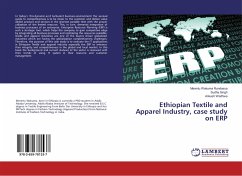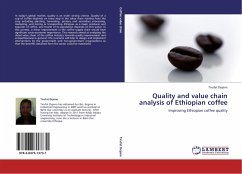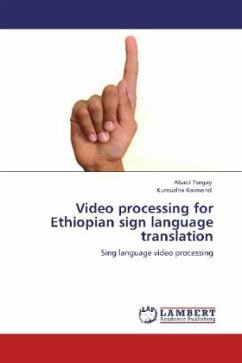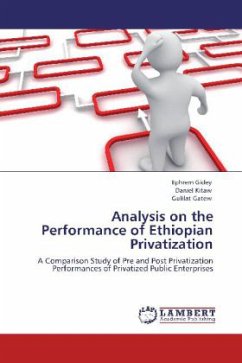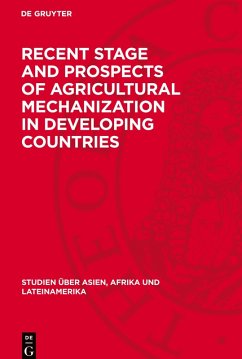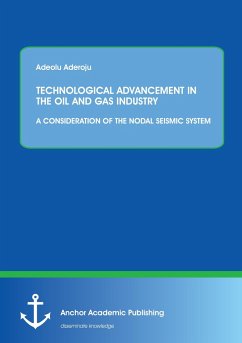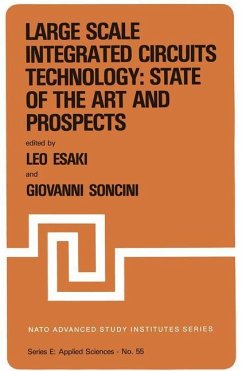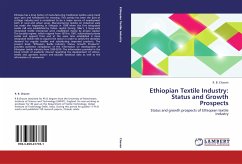
Ethiopian Textile Industry: Status and Growth Prospects
Status and growth prospects of Ethiopian textile industry
Versandkostenfrei!
Versandfertig in 6-10 Tagen
65,99 €
inkl. MwSt.

PAYBACK Punkte
33 °P sammeln!
Ethiopia has a long history of manufacturing traditional textiles using hand spun yarn and handlooms for weaving. This activity has been the part of cottage industry and is considered to be a major source of employment both in rural and urban areas. Manufacturing textiles on industrial scale has made the beginning in Ethiopia in 1939 when the first integrated textile mill was established by Italian capital. During 196o's, 5 large-scale integrated textile enterprises were established mainly by private capital. The socialist regime, which reigned from 1974 to 1991, nationalized private textile a...
Ethiopia has a long history of manufacturing traditional textiles using hand spun yarn and handlooms for weaving. This activity has been the part of cottage industry and is considered to be a major source of employment both in rural and urban areas. Manufacturing textiles on industrial scale has made the beginning in Ethiopia in 1939 when the first integrated textile mill was established by Italian capital. During 196o's, 5 large-scale integrated textile enterprises were established mainly by private capital. The socialist regime, which reigned from 1974 to 1991, nationalized private textile and apparel firms and at the same time established 4 more integrated textile mills to expand the sector in order to satisfy the domestic demand for regular textiles and substituting imported products. The present book "Ethiopian Textile Industry: Status, Growth Prospects" provides authentic compilation of the information on development of Ethiopian textile industry from 1939-2010. The information provided in the book is both of academic interest regarding the development of cotton, textile and garment sectors and valuable statistical data as well as the information of commercia



